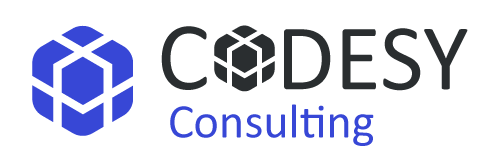
As healthcare continues its digital transformation, the demand for innovative software solutions has skyrocketed. From enabling remote consultations to facilitating seamless healthcare operations, healthcare software plays a crucial role in the industry’s evolution. Additionally, the demand for healthcare services has risen a lot in the previous months, which goes to show the importance of advancements in this field.
Healthcare is embracing AI and Augmented Reality (AR) in applications for a more immersive user experience. But integrating these isn’t a walk in the park—it requires significant research and a substantial budget. Therefore, we have prepared this guide to provide you with an overview of healthcare web development, which addresses everything from types of healthcare software to the cost of development.
What is healthcare development?
Healthcare software development refers to the creation, implementation, and maintenance of specialized software solutions tailored to the needs of the healthcare industry. This development focuses on designing various application systems and tools that fulfill specific roles in the healthcare industry.
Some features of these systems include healthcare delivery, administration, patient care, and data management. These solutions accomplish a wide range of operations, increase productivity, streamline data management, shorten wait times, and lower healthcare-related expenses.
Types of healthcare software
The healthcare industry is vast, and so are the business solutions if you are looking to develop a healthcare app. There are several options you could explore, such as telehealth, electronic prescription software, and fitness apps. The following section discusses the specifics of these several categories of healthcare software:
Telehealth
Telehealth is revolutionizing the way patients interact with healthcare providers. By effectively bridging the geographical gaps between individuals and healthcare professionals, telehealth opens doors to remote consultations, virtual check-ups, and remote monitoring.
Telehealth fosters a patient-centric approach to healthcare delivery and provides a lifeline for those with limited mobility or living in remote areas with features like video conferencing, secure messaging, and real-time data sharing.
Patient monitoring software
Patient monitoring software is used in healthcare environments to continuously or periodically track and record patients’ vital signs, health parameters, and overall health status. This software collects real-time data from various medical devices, sensors, or wearable technologies. It helps ease the process of patient monitoring, especially in cases where continuous monitoring and instant feedback or action are crucial for patient well-being.
E-prescription software
E-prescription software simplifies medication management and prescription workflows by digitizing the prescription process. This software allows doctors and healthcare providers to create digital prescriptions directly within the system. This eliminates the need for handwritten prescriptions, reducing errors due to illegible handwriting and ensuring clarity in medication details.
It also saves waiting periods for patients by delivering their prescriptions straight to the pharmacy of their choice, guaranteeing that their drugs are available for pickup when needed.
Fitness apps
Fitness apps are all the rage nowadays, and rightly so. The main factor for the popularity of these software is their accessibility, which enables users to obtain individualized coaching and advice whenever it’s convenient for them. Apart from features such as progress tracking and social sharing, these apps also function as a platform to link trainers and nutritionists with potential clients.
Benefits of healthcare web development
To improve patient care, streamline operations, and improve overall healthcare services, healthcare web development offers several advantages. These include:
Enhanced marketing
If your business lacks an online presence in this digital age, then there is very little chance that people will get to hear about your services. The healthcare industry also benefits from an online platform that showcases its services to a large consumer base that may require it for a variety of objectives, such as online video consultation or producing e-prescriptions.
Healthcare web development makes use of user data and web analytics to execute customized marketing campaigns. In this manner, you can customize your marketing tactics and reach an appropriate audience with relevant information.
Appointment scheduling
This feature in healthcare software has revolutionized the way patients book their appointments with healthcare providers. Patients can conveniently schedule, modify, or cancel their appointments, ultimately reducing administrative burdens and enhancing the overall patient experience. Moreover, it enables healthcare practitioners to send automated reminders and easily manage their appointments.
Cost-effectiveness
Cost-effectiveness is facilitated in several ways by healthcare web development. It promotes the automation of various administrative tasks, such as scheduling appointments, sending invoices, and maintaining records. As a result, there is less of a strain on the need for personnel and related operating expenses.
Additionally, features like video consultations with medical professionals enable both patients and providers to receive healthcare from the comfort of their own homes while saving money on travel costs.
Health-records management
Management applications go a long way toward streamlining the procedure at the healthcare service provider’s location. Centralized Electronic Health Record (EHR) systems streamline record-keeping and documentation, eliminating the hassle of physical storage.
These management systems are an ideal choice for handling data because they have a number of features like effective searching, data retrieval, and data storage. Aside from improved organization, it also speeds up management operations, improving the overall healthcare experience.
Patient engagement
Healthcare websites provide a great sense of control to the patients as their engagement is enhanced through multiple features of the application. For instance, they can view relevant information, ask questions, and participate in discussions over these apps.
This engagement can lead to better-informed decisions, increased adherence to treatment plans, and a stronger sense of partnership between patients and healthcare providers. It also enables patients to take a more active role in managing their health and well-being, ultimately leading to better health outcomes.
Features of a healthcare web application
Healthcare websites are often overloaded with features, of which some are basic, such as searching and creating a profile, while others are specific to the medical domain, such as the ability to book appointments or video consultations. The details about the features of a healthcare application are discussed below:
User-friendly interface
The UI/UX of any web app forms a major part of the whole application and significantly influences the user interactions on the app. Healthcare web apps are generally designed to be simple and easily accessible as the user base is very diverse, with a majority of them being the sick and elderly.
When designing the interface, the goal should be to present as much information as possible without violating any of the design golden rules, such as user familiarity or learnability.
Patient profiles
User profiles, which are patients in the case of healthcare online apps, are critical components that hold detailed information about patients. It may include basic information such as name, date of birth, contact information, and address, as well as more particular information about their medical history, prior healthcare providers, and a section to attach their medical reports.
Video consultation
Video consultations became popular during the pandemic, but they are now the norm. Instead of spending hours traveling to the medical facilities, the majority of patients choose to consult with their healthcare experts via video conferences.
A smooth video consultation can only be achieved if a proper video conferencing system is included in the app, which can also track the time and even record the discussion.
Admin interface
The admin interface serves as the control center for healthcare administration, catering to diverse functionalities for various employees. Within this interface, staff members, including doctors, receptionists, and managers, access different features aligned with their roles and responsibilities.
For instance, receptionists are primarily tasked with managing and updating schedules, ensuring appointments align seamlessly. Administrators wield higher-level control, overseeing doctor statuses and managing their presence within the system, including the addition or removal of doctors based on staffing needs.
Notifications
Implementing timely notifications within a healthcare web app is pivotal for enhancing patient engagement. Patients can opt to receive alerts on their devices, spanning smartphones or computers, informing them about impending appointments, availability of test results, or reminders for prescription pickups.
When carefully incorporated into the healthcare web app, these notification systems not only improve communication but also give patients the ability to take charge of their own wellness and proactive management of their medical routines.
Online bill payment
As with any other web app that offers paid services, if your healthcare service provides paid consultation, then you must integrate the online bill payment feature in the app. Security is paramount; therefore, partnering with a reputable payment gateway provider is crucial to implementing robust encryption and security measures, ensuring the protection of sensitive financial data.
For a payment system, consider something adaptable that can handle several different payment options, including digital wallets, credit/debit cards, or even direct bank accounts. Patients should be guided step-by-step through the payment process by the interface, which should provide clear instructions and transparent pricing breakdowns.
Top market trends of healthcare web development
Keeping up with market trends allows you to create a website that is not only functional but also meets the ever-evolving demands of your consumer base. Some of the latest trends in the healthcare market are as follows:
Remote Patient Monitoring
How medical practitioners track their patients is expected to change as a result of remote patient monitoring. It entails the use of technology to gather health information from patients outside of healthcare facilities and provide it to their physicians. The primary means of achieving this is through wearable devices that are integrated with software systems to allow for remote, continuous monitoring of patients’ symptoms, vital signs, and other health indicators.
AI integration
The use of AI in diagnostic healthcare is getting increasingly advanced. With the ability for consumers to input their symptoms and have the AI provide a specific diagnosis, it has developed into a crucial component of websites for healthcare professionals.
AI is also being used in oncology, for instance, to evaluate pathology images of different cancer types and provide very precise diagnoses and optimal anti-cancer medication combinations.
Interoperability and data exchange
In today’s healthcare sector, interoperability and data transmission remain critical issues because of a lack of centralized healthcare systems, which makes seamless data interchange challenging. Software developers are anticipated to focus on verifying and improving interoperability standards, such as FIHR (Fast Healthcare Interoperability Resources). The goal is to enable the seamless exchange of patient information among electronic health records, healthcare apps, and social platforms.
Cost of building a healthcare website
Healthcare web development is far from being a simple or cheap process, as it involves several intricacies that need to be taken care of. You must consider a list of factors that influence the cost of development when establishing a fully functional healthcare website, especially if you are working with a limited budget.
The list of factors that influence the cost of development is as follows:
- UI/UX design
- Development team
- Platform of the app
- Complexity
- Maintenance
- Hosting and domain
Keeping in view these factors, which vary from one website to another, an average healthcare website’s costs can start at $50,000. Developing a web app like this typically takes 5 to 7 months from scratch, but timelines can vary based on the hired development team. Dedicated healthcare web developers or outsourcing agencies focusing full-time on your project might expedite the process to around three months.
Before beginning the development process, we recommend completing extensive research on the industry, market trends, existing healthcare web apps, and so on so that you can make informed decisions while also setting a reasonable budget.
Codesy Consulting – Hire the best healthcare web developers
Ready to transform your healthcare vision into reality? At Codesy Consulting, we’re your partners in crafting innovative healthcare solutions. Our team of dedicated developers specializes in creating cutting-edge web applications tailored to the evolving needs of the healthcare industry. From seamless patient experiences to robust administrative tools, we prioritize excellence in every line of code. Elevate your healthcare journey with Codesy Consulting—where expertise meets innovation.





